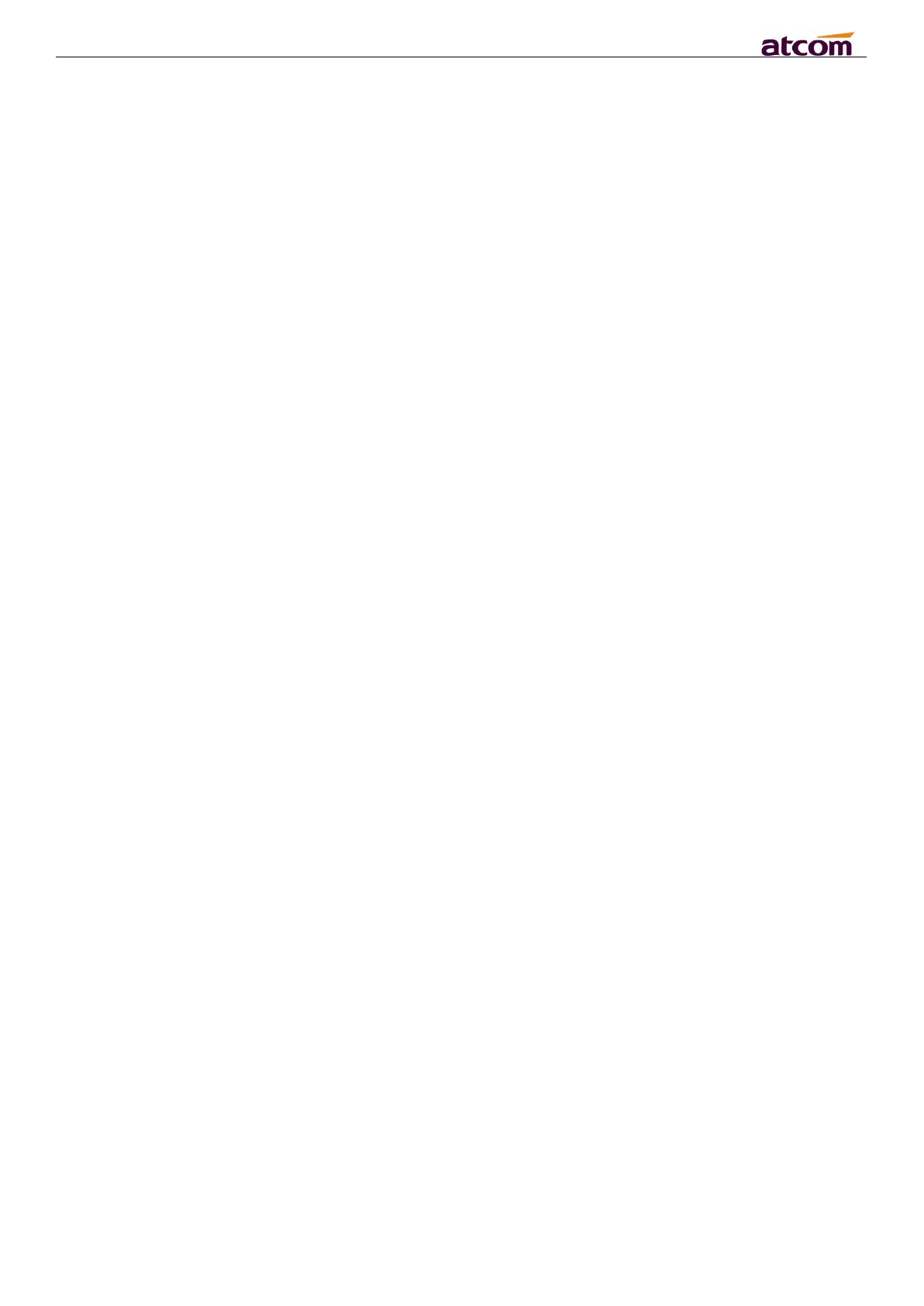➢ LED indicator: 1 Status Light, 2 line indicators
1.3 Software
➢ Sip 2.0 (RFC3261) and other related SIP RFCs
➢ 2 SIP lines
➢ STUN
➢ Jitter Buffer, VAD,CNG
➢ G711A/u, G722, G726-16, G726-24, G726-32, G726-40, G729 , Lin16-16, iLBC
➢ Echo Cancellation
➢ SIP Domain name, Authentication
➢
DTMF(inband, RFC2833, info)
➢ Call transfer, Call forward, 3-way conference, Call hold, Call back
➢ DND(Do Not Disturb), Auto answer, Blacklists, Block Call-ID, Block Anonymous call, Dial
plan, IP call
➢ Phone book with 1000 white records and 100 black records, 200 answered calls, 200 missed
calls, 200 dialed calls
➢ Update via HTTP, FTP, TFTP, PNP,HTTPS
➢ Syslog
➢ SNTP
➢ WEB access with different login level
➢ Multi-language: English, Chinese, Farsi, French, German, Hebrew, Italian, Portuguese,
Russian, Spanish, Turkish
➢ Soft button: soft button * 3
➢ Redundancy SIP server
➢ BLF
1.4 Network
➢
LAN/PC:Support bridge mode
➢ Support VLAN(LAN VLAN and PC VLAN)
➢ Support L2TP VPN
➢ LAN support Primary and Secondary DNS
➢ LAN support DHCP Client
➢ Support QoS
1.5 Management and
Maintenance
➢ Support safe mode and firmware updating under safe mode
➢ Support different level user management
➢ Configuration via web , keyboard
➢ Support multi-language
➢ Auto provision (Firmware and configuration file)
➢ Support system log and call log
1.6 Protocol
➢ IEEE 802.3 /802.3 u 10 Base T / 100Base TX
➢ DHCP: Dynamic Host Configuration Protocol
➢ SIP RFC3261, RFC3262, RFC3263, RFC3264, RFC3265, RFC2543, RFC3489, RFC3842,
RFC3515, RFC2976, RFC3428, RFC2327, RFC2782, RFC1889
➢ TCP/IP: Transfer Control Protocol/Internet Protocol
➢ RTP: Real-time Transport Protocol
➢ RTCP:RTP Control Protocol
➢ DNS: Domain Name Server
➢ TFTP: Trivial File Transfer Protocol
➢ HTTP:Hypertext Transfer Protocol
